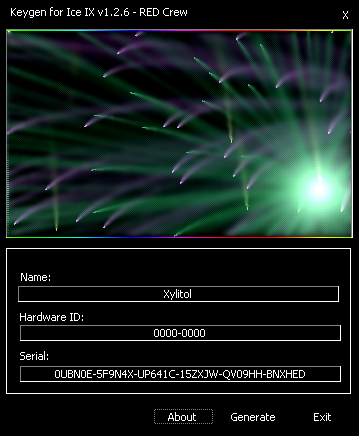Abandoned Well Keygen
- Posted in:Admin
- 04/05/18
- 75
Rafael Aguilera for The Texas Tribune. “The abandoned well issue is just going to increase with the number of wells drilled. Wondershare Dr.Fone keygen is electronic publishing. It has updated achievement of retrieve your abandoned data. It has well-off rating underdone to its. What is an Abandoned Well? The Groundwater Quality Control Act, Part 127, 1978 PA 368 defines an abandoned water well as a well which: has its use permanently.

Well Plugging 2015 At the end of their economic life, wells must be plugged in accordance with statutory and regulatory requirements. To ensure the sufficiency of funds for well plugging, DMN holds financial security in amounts statutorily determined based on an operator's number of wells and their depths. At year-end 2015, DMN held $23.10 million in financial security to guarantee well plugging and well site reclamation. This represents a decrease of $2.22 million from the amount held at year-end 2014. Plugging Permits In 2015, operators plugged 232 wells in accordance with requirements in DMN-issued plugging permits.

Of the 232 wells plugged in 2015: • 155 (67%) of the plugged wells were oil and secondary recovery wells in the old oilfields of western New York; • 42 (18%) were gas wells; and • 35 (15%) were comprised of a mix of other regulated well types. Plugging occurred in 14 counties with 40% of the plugging jobs in Allegany County and 26% in Cattaraugus County.
As noted above, the vast majority of plugging jobs involved old oil wells, particularly in the Richburg and Bradford fields. Abandoned Well Plugging Orphan wells are unplugged wells that have been abandoned by their original owners. These wells exist in all oil and gas producing regions in the United States including New York State, and represent a relatively small but significant part of the nation's legacy of historical energy production.
There are records for over 3,500 orphan and abandoned wells in the Department's oil and gas database. Most of these wells were drilled prior to the existence of a regulatory framework in New York. Since 1981, when the New York State Legislature established the Oil and Gas Account (originally called the Oil and Gas Fund) to address orphan and abandoned wells, the state has made efforts to plug such wells, with some limited success. The account receives $100 from every ECL Article 23 Permit to Drill issued by the DMN. At year-end 2015, this account held $104,107.
Additionally, DMN staff continued working with the U. Tenchi In Tokyo Dublado Avi. S. Environmental Protection Agency (USEPA) and the U.S.
Coast Guard to plug oil wells with federal funding authorized under the Oil Pollution Act of 1990. As a direct result of DMN staff efforts, USEPA has undertaken several plugging projects in New York State. In 2015, USEPA plugged a total of 11 Upper Devonian oil wells in the Town of Alma in Allegany County. In conjunction with the well plugging efforts, the well sites were reclaimed. The state's 2014-15 FY budget included $2 million for the plugging of orphan and abandoned oil and gas wells in the state. This allocation is part of the New York Works Infrastructure Program, and is referenced as the New York Works Well Plugging Initiative (NYWWPI). See the following section of this report for a discussion of the NYWWPI.
The Division continued to inspect and evaluate well sites to support the development of additional well plugging projects. New York Works Well Plugging Initiative The State's budget for the 2014-2015 FY included $2 million for the plugging of orphan and abandoned oil and gas wells; this funding - termed the New York Works Well Plugging Initiative (NYWWPI) - has provided a significant opportunity to address these abandoned oil and gas wells, some of which represent significant threats to public health and the environment. New York is home to over 3,500 orphan and abandoned wells, concentrated primarily in the southwestern part of the state where most of the historical drilling has occurred. To prioritize the wells for inclusion in NYWWPI well-plugging projects, the Division uses a scoring rubric that assigns numeric values to various aspects of each well (e.g., location, construction, proximity to sensitive receptors) and then sums the individual values to establish a total score for each well. Higher-scoring wells represent greater potential threats, and those wells are given priority for plugging under the NYWWPI. Consistent with Department practice for all ECL 23 well-plugging operations, the land surface around each well is restored to match adjacent areas.
Building on its successes from the previous year, the Department completed two single-well-plugging projects under the NYWWPI in 2015. These two projects resulted in the plugging of one abandoned gas well in the Town of Cameron, Steuben County and one abandoned gas well in the Village of Depew, Erie County. The project in the Town of Cameron was the Hall 1 (API 31-101-00100-00-00), an abandoned 3,900-foot Oriskany well that had been leaking gas and flowing brine for decades to the North Branch of Tuscarora Creek. To compound the situation, an adjoining landowner had connected a large propane tank and fittings to the leaking well to provide natural gas service to his residence, and initially resisted Department efforts to plug the well. DMN staff coordinated with Division of Law Enforcement in an effort to defuse any potential confrontations with the landowner during the plugging process. After setting the production zone plug and effectively 'killing' the well, a small gas leak was detected outside the surface casing that had been installed to stabilize the well for plugging.